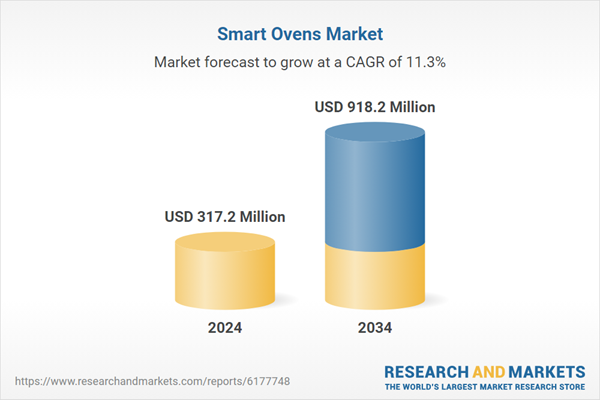The rapid growth is fueled by the rising integration of smart home technology and the growing desire for automated, time-saving kitchen solutions. Consumers are increasingly seeking appliances that can connect to Wi-Fi, sync with voice assistants, and provide remote access - all key features of today’s smart ovens. The push toward energy efficiency and sustainability is also motivating buyers to opt for ovens that optimize power usage and minimize food waste. These appliances offer precise control and intelligent features that appeal to consumers who are conscious of energy use and convenience. The demand is also closely linked to evolving consumer habits, especially in urban centers where fast-paced lifestyles demand efficient meal preparation. People are turning to multifunctional ovens that support healthy cooking techniques like air frying, grilling, and steaming. The surge in online retail platforms has further expanded product visibility, enabling customers to research specifications, compare prices, and make informed decisions. E-commerce is playing a significant role in driving awareness and adoption across both developed and emerging markets, supporting the continued growth of the smart ovens industry.
The built-in oven category segment generated USD 207.9 million in 2024 and is projected to grow at a CAGR of 11.5% throughout 2034. This segment benefits from the rising demand for seamless, integrated kitchen designs. Built-in ovens are gaining popularity for their aesthetic appeal and space-saving attributes, especially in modern urban homes. They are often equipped with smart connectivity, energy-saving features, and intuitive controls, which align well with current consumer expectations. Market leaders are focusing heavily on enhancing user interface, automation, and design flexibility, making these ovens even more attractive for contemporary kitchens. Innovations in materials, touchscreens, and modular configurations are helping manufacturers keep up with the evolving needs of residential buyers.
The residential segment held an 85% share in 2024 and is anticipated to grow at a CAGR of 11.2% from 2025 to 2034. This dominance is driven by rising household demand for intelligent, multifunctional kitchen appliances. As disposable incomes rise and smart living gains traction, consumers are prioritizing convenience and performance. Features such as voice control, smartphone connectivity, and energy optimization are particularly appealing to tech-savvy homeowners. In addition, the growing interest in home cooking and baking has created a strong market for ovens that offer both versatility and ease of use. The trend is amplified by the increased time spent at home and the desire to replicate professional cooking experiences in domestic settings.
United States Smart Ovens Market generated USD 83.5 million and held a 77% share in 2024. The country's leadership in smart home adoption, coupled with rising demand for energy-efficient and connected appliances, has played a key role in boosting smart oven sales. Increased investment in smart infrastructure and home automation across the U.S. is further driving consumer demand for high-performance cooking appliances. Consumers are increasingly incorporating smart ovens into new homes and kitchen renovations, making them a standard feature in many smart home ecosystems.
Key players in the Global Smart Ovens Market include Whirlpool, GE Appliances, Samsung, Sharp, UNOX, LG Electronics, KitchenAid, June Oven, Electrolux, Breville, Alto-Shaam, BSH Home Appliances, Nuwave, Haier, and Fagor Professional. To strengthen their position in the global smart ovens market, leading companies are focusing on continuous innovation and enhanced connectivity features. Many brands are introducing advanced models with app integration, real-time recipe guidance, and AI-driven cooking automation to elevate the user experience. Strategic investments in energy-efficient technologies and voice assistant compatibility are also helping brands stand out. Partnerships with smart home ecosystem providers and e-commerce platforms are expanding their digital footprint. Additionally, manufacturers are targeting premium and mid-range segments through product differentiation, intuitive interfaces, and modular kitchen solutions tailored for modern urban living.
Comprehensive Market Analysis and Forecast
- Industry trends, key growth drivers, challenges, future opportunities, and regulatory landscape
- Competitive landscape with Porter’s Five Forces and PESTEL analysis
- Market size, segmentation, and regional forecasts
- In-depth company profiles, business strategies, financial insights, and SWOT analysis
This product will be delivered within 2-4 business days.
Table of Contents
Companies Mentioned
The companies profiled in this Smart Ovens market report include:- Alto-Shaam
- Breville
- BSH Home Appliances
- Electrolux
- Fagor Professional
- GE Appliances
- Haier
- June Oven
- KitchenAid
- LG Electronics
- Nuwave
- Samsung
- Sharp
- UNOX
- Whirlpool
Table Information
| Report Attribute | Details |
|---|---|
| No. of Pages | 220 |
| Published | September 2025 |
| Forecast Period | 2024 - 2034 |
| Estimated Market Value ( USD | $ 317.2 Million |
| Forecasted Market Value ( USD | $ 918.2 Million |
| Compound Annual Growth Rate | 11.3% |
| Regions Covered | Global |
| No. of Companies Mentioned | 16 |









